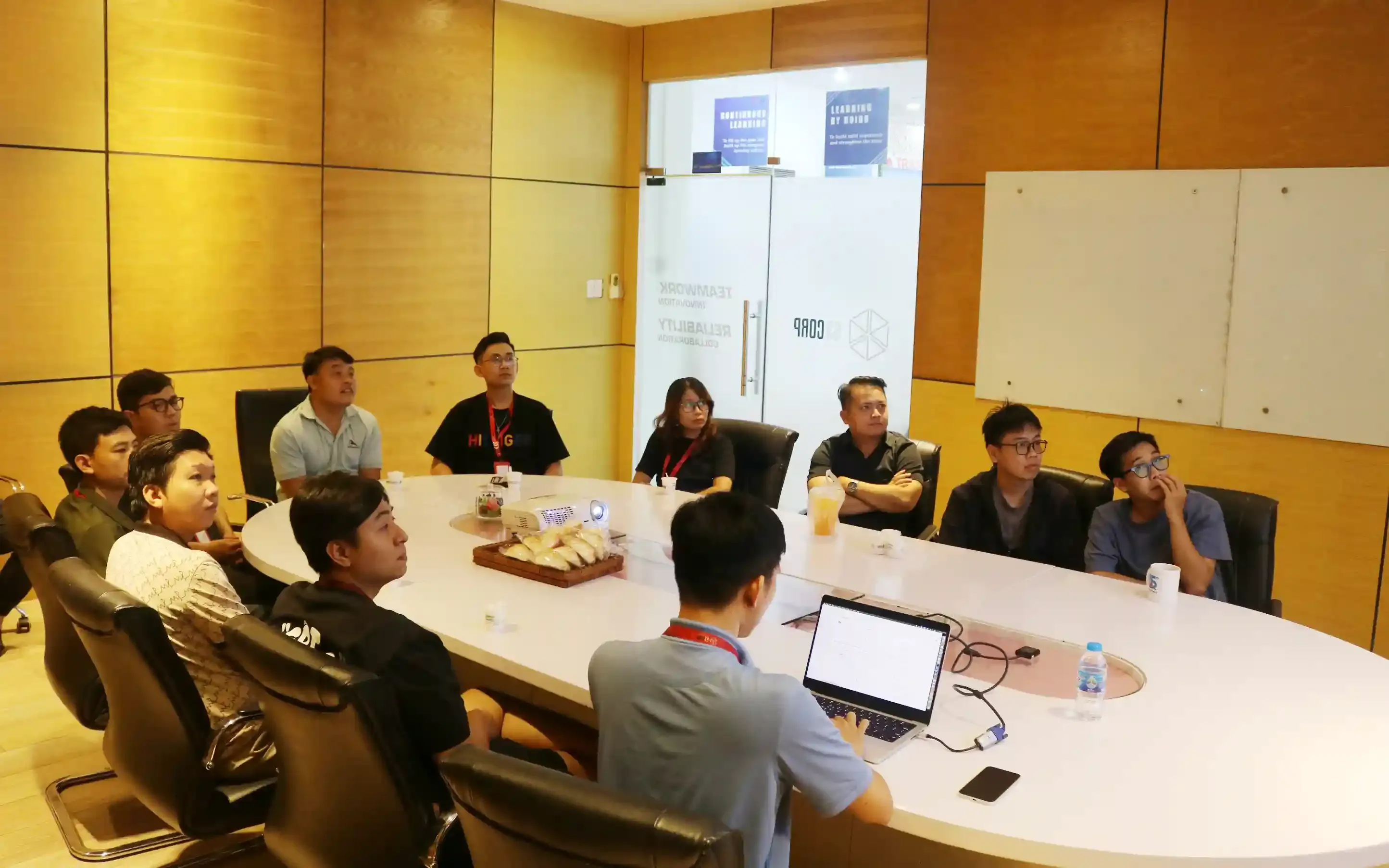Deploy AI Model into Production with Inference Endpoints

News
On Friday, 20 June 2025, S3Corp. held an internal knowledge-sharing session titled "Deploy AI Model into Production with Inference Endpoints." The session focused on simplifying the deployment process of machine learning models using Hugging Face's tools. The goal was to share hands-on knowledge about hosting ML models as scalable APIs, removing the need for DevOps effort, and obtaining a live URL to connect with applications in real-time.
20 Jun 2025
On Friday, 20 June 2025, S3Corp. held an internal knowledge-sharing session titled "Deploy AI Model into Production with Inference Endpoints." The session focused on simplifying the deployment process of machine learning models using Hugging Face's tools. The goal was to share hands-on knowledge about hosting ML models as scalable APIs, removing the need for DevOps effort, and obtaining a live URL to connect with applications in real-time.
 This session aligns with the S3Corp. value of continuous learning. Team
members regularly participate in training to stay current with evolving
technologies. This approach fosters collaboration and encourages the spread of
practical knowledge within the organization. The AI deployment session
reflected this commitment.
This session aligns with the S3Corp. value of continuous learning. Team
members regularly participate in training to stay current with evolving
technologies. This approach fosters collaboration and encourages the spread of
practical knowledge within the organization. The AI deployment session
reflected this commitment.
Deploying a machine learning model into production traditionally involves several complex steps. These include managing servers, creating Docker images, handling load balancing, and monitoring usage. Teams often need DevOps specialists to set up scalable infrastructure. For smaller teams or faster delivery requirements, this creates a barrier. The session introduced Hugging Face Inference Endpoints as a direct solution to this challenge.

The training introduced Hugging Face Inference Endpoints as a fully managed service to deploy machine learning models with no infrastructure management. The process only requires a few configuration steps on the Hugging Face platform. Once configured, the model is deployed on cloud infrastructure and made accessible through a live API endpoint.
This approach enables users to host models on-demand without provisioning or managing servers. The endpoints are built to scale automatically based on traffic and model complexity. This creates a fast path from development to production.
The session included a step-by-step demonstration of deploying a model using Hugging Face. First, a model hosted in the Hugging Face Model Hub was selected. Then, through the web interface, the deployment was initiated by choosing a cloud provider and instance type.
After authentication, the user defined resource limits and enabled security settings such as token-based access. Once deployed, the endpoint provided a unique URL. This URL could be used in web or mobile applications to send input data and receive predictions from the model.
The demonstration emphasized the simplicity of the process. No command-line interface or DevOps scripting was needed. The deployment was completed directly from the browser within minutes. The live endpoint became available for testing immediately.
During the session, the practical use of inference endpoints was highlighted. When an AI model is available as a live API, it becomes easier to integrate with client-side applications. This includes chatbots, recommendation systems, sentiment analyzers, image classifiers, and more. Any model that responds to input with a prediction can benefit from this deployment pattern.
The team discussed real-world scenarios such as integrating a language translation model with a web application or connecting a classification model to a customer support tool. The endpoints can process live requests, making it suitable for production-grade use.
This structure also supports iteration. Developers can update models in the Hugging Face Hub, redeploy endpoints, and maintain version control without infrastructure disruption.
The training emphasized the key benefit of using Hugging Face Inference Endpoints—there is no need to manage virtual machines, containers, or cloud platforms manually. Everything is abstracted into a simple configuration.
This allows teams to focus on improving model performance and application logic instead of infrastructure. It also accelerates deployment cycles and reduces operational overhead. For teams without dedicated DevOps resources, it offers a viable production pathway.
Security and scalability are managed by Hugging Face infrastructure. The session highlighted built-in features such as auto-scaling, model logging, token-based access, and monitoring dashboards. These tools support the reliability and observability of the endpoint.
Participants were encouraged to follow along with the deployment steps. Those who had active Hugging Face accounts tested model deployment on their own. The training leader provided examples of different models suitable for deployment, including text summarization and sentiment analysis models.
The session included testing the endpoint with curl requests and through simple web applications. The response time and accuracy of deployed models were demonstrated live. This hands-on portion gave participants a direct view of the full deployment cycle—from model selection to integration.
S3Corp. promotes a culture where technical growth is a shared responsibility. Training sessions like this ensure that teams are equipped with modern tools that improve efficiency and delivery speed. These sessions are led by internal team members, creating a peer-to-peer knowledge environment.
The deployment training connected practical knowledge with immediate application. It offered a way to bridge development and production without increasing technical burden. By learning together, teams grow faster and deliver better.
S3Corp. will continue organizing technical sharing sessions to keep the teams informed, skilled, and motivated to explore the latest tools in software engineering and machine learning.
Whether you have any questions, or wish to get a quote for your project, or require further information about what we can offer you, please do not hesitate to contact us.
Contact us Need a reliable software development partner?
S3Corp. offers comprehensive software development outsourcing services ranging from software development to software verification and maintenance for a wide variety of industries and technologies
Software Development Center
Headquater 307
307/12 Nguyen Van Troi, Tan Son Hoa Ward, Ho Chi Minh City, Vietnam
Office 146
3rd floor, SFC Building, 146E Nguyen Dinh Chinh, Phu Nhuan Ward, HCMC
Tien Giang (Branch)
1st floor, Zone C, Mekong Innovation Technology Park - Tan My Chanh Commune, My Phong Ward, Dong Thap Province
_1746790910898.webp?w=384&q=75)
_1746790956049.webp?w=384&q=75)
_1746790970871.webp?w=384&q=75)
